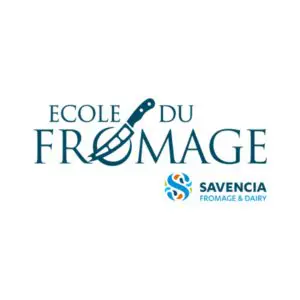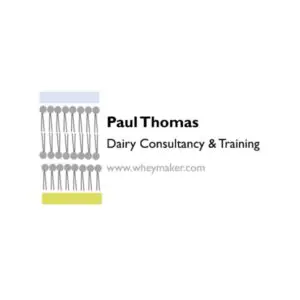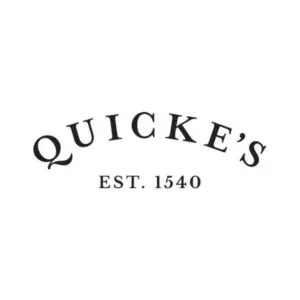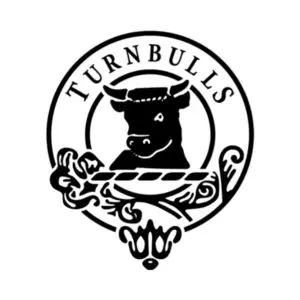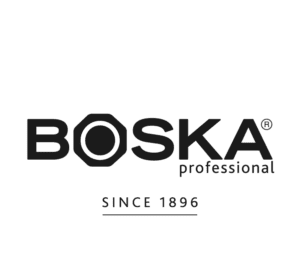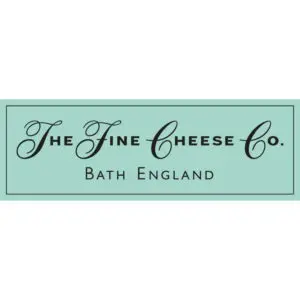#TNCN with Charlie Turnbull meets and talks and tastes with Blue Cheese expert and legendary stilton maker Robin Skailes. It must be Christmas!
Streamed live on Nov 10, 2020
GUIDE TO TASTING CHEESE
Learn about the four stages of tasting cheese and how to take tasting notes with this definitive guide to tasting cheese.
Cropwell Bishop Dairy Episode Video Transcript
Right it’s the Indiana Jones of cheese here, Charlie Turnbull. Hello jesus i see that lots of people let’s get rid of the picture get rid of the picture Charlie t here we go.
Hello it’s Charlie Turnbull it’s Tuesday Night it’s Cheese Night and this is Robin Scales. Hello Robin. Hello good evening welcome to our infamous tuesday night cheese program i am super embarrassed to find that you’ve you’ve never watched tuesday night is cheese now you’re supposed to be one of the master cheese lovers in the country i know i’ve been missing a lot but um i am i hope that we can teach everyone a little bit about blue cheese tonight and um we’ll certainly have a very uh we’ll have a fascinating half an hour i think ahead of us i i’m sure he will you are obviously a master master stilton maker tell us a little bit about the history of cropwell bishop so that we’ve got a uh got an idea yeah well we’re a um we’re a family business we’ve been around um for about 150 years so so quite a long time um we’ve been making yeah stills in the crotal bishop for for many many years and um stillson is is one of those um cheeses that is protected and it can only be made in a certain part of the country so we’re in uh we’re in crotwall bishop which is a small village outside of nottingham which is sort of the heart of stilson making country i’m just saying saying that your village sign there um it’s a real place everyone thinks that still cropped bishop is a cheese it’s it’s also a place you can you can go there yeah so the dairy is just slap bang in the middle of the village and the village has sort of grown around us over the last um sort of 30 or 40 years so we’re right in the middle of the village and you know every day um the local community the locals in the village they come and buy some of their local trees you know it’s great um but uh so stilton could they be made in three counties in the uk derbyshire leicestershire in nottinghamshire so it can’t be made anywhere else in the uk or indeed the world so it’s a unique product to to us in the uk so we’re very proud of it it’s it’s probably no i would say definitely the most successful pdo we’ve got isn’t it i mean britain isn’t fat with really good um protected food names and the irony of that is is that you as an organization the stilton cheese makers association have been protecting it before we took protected food names into the uk you were getting trademarks and that kind of thing back into the 1930s and 1940s is that right yeah yeah so uh the stilton cheese makers association which is essentially um a group of all the stilton makers at the time we trademarked the product or my predecessors did in 1966 so it’s been a protected cheese for um for a long time and it was granted pdo which is the european protected sort of trademark for um for uh for established food products in 1996 one of the first ones in the uk to be granted that protection so yes you’re right it’s one of the most famous um protected food products from the uk and i think without doubt the most famous cheese because it’s exported globally i mean you can buy stilton everywhere in the world i mean in japan china everywhere so it is um it’s pretty well renowned all across the globe and it’s that thing you know britain’s two most favorite cheeses famous cheeses are cheddar and stilton and they are completely opposite in in in terms of how they’re made stilton is a very small group of cheese makers i think you’ve got five stilton makers at the moment are you back six uh we’ve got five we’ve got yeah and and they’re all sort of within spitting distance of melt and mowbray all of it in that area there whereas cheddar is made all over the world it’s completely it’s gone to the wild basically yeah i mean you can make cheddar in canada australia wherever you like yeah there is um there is some protected cheddar that has to be made in a special way only from the west country but um but trader is cheddar and it can be made anywhere so um and i suppose it it it’s such a popular cheese that that’s why it probably can be made everywhere because you know and it’s a slightly easier cheese to make than still so a lot easier a lot easier there’s there’s much less and it keeps longer yeah it’s easier to handle because um so um yeah we’re very proud of stilton and um you know we have to protect it that’s our job as um as the stills and cheese makers association i i sort of work very closely with them uh our job is to protect the um integrity of stilts and cheese we don’t own the brand of stills and what our job is is to hand that brand down to the next generation in a way that the next generation can enjoy so 101 what is stilton describe it what makes stilton stilton why is it not shropshire blue what is stilton in terms of its uniqueness so start with the milk so the milk has to come from leicestershire derbyshire in nottinghamshire most of the milk that we use comes from derbyshire in fact all of it comes from derbyshire we’ve got 10 farms up there that surprise with all um all the fresh milk that goes into the cheese the the milk is special because of the um the breed of cow and um and what the cows eat so the cows graze on grass that’s what we try and encourage so all um across the summer months the cows have been outside grazing the grass and that gives us really good milk for making stillson so we actually have a milk and i don’t want to get too technical but the milk is quite low in fat so the milk is is sub four percent fat so if you’re riding in west country making cheddar you’d be making cheddar with milk that’s maybe five percent fat a lot if you start trying to make cheddar with i don’t know jersey milk or something it goes wrong again each cheese has its own little envelope of perfection isn’t it that’s right so we can’t make stilton with jersey milk or you know we just simply it does not work the cheese would be extremely acid it would be very crumbly it would be far too high in fact so stilts and milk should be low in fat it comes from the traditional black and white cow mainly friesian 99 of our cows are freezing and um the protein content is high about 3.4 percent but the fat is about 3.8 3.9 so that gives us the best ratio of fat and protein for stilton and um of course the the the main ingredient for stilton and what stillson is famous for is of course the blue mold can i can i pause you a second i’ve got a question from the floor who are the five cheese makers okay so um well crocodile bishop coulson bassett long clawson dairy tuxedo and tabbett owned by arla hartington you are in derbyshire and there’s a white there’s a dairy that makes white stills and called shy of ale so what about five blue stilton and one purely white stilton which i suppose total six is it not my well my wrong about is webster’s mind made that up yeah webster’s i believe are not making cheese at the moment or anything okay well that answers his david’s second question which is come on show oh where’s going who doesn’t really cut webster’s is the answer david and it’s because they’re not producing at the moment okay so where were we the blue that makes blue cheese yeah so the blue is very important should we have a look at it here we are right now i have to admit that i didn’t have any uh cropper bishop in my fridge and many stills in my fridge um is that kind of um so i had to go down to waitrose today and they uh obviously haven’t stopped up for christmas um and this was pre-wrapped but he’s looking good he’s only wrapped in cling film he’s so we’ve got a nice so got a darkish blue mould there um and you’ve got but i don’t know whether it’s a camera but yours is showing a much creamier so this is a half stilton so yeah obviously you know we’re talking a much bigger piece and this is cut from a whole cheese so it’s it’s sort of cut um down its equator so you can see the um the internals of the cheese and you can see the sort of um the veining the blue veining through the whole cheese yeah which is what we’re trying to achieve because the blue mold is is crucial in maturing the cheese because stillson is a mold ripened cheese we need the blue to ripen the cheese if there’s no glue we’re not going to get any of that nice breakdown which gives you that soft texture when you eat it so we need the blue to act on the curd i think i think that’s why we misunderstood is that they people think the blue is there to give flavor in itself like a spice but actually it does more it gets into the curd and breaks it from its crumbly texture which would be more i don’t know sort of kephilisk am i right about that sort of yeah i think yeah yeah and then and then it breaks down to a smooth texture so i’m gonna just to demonstrate that point i do have a bit of white stilton here okay so this is without the blue so you can see it’s quite an open textured cheese there’s no blue mold in it yeah i’m screwed seeing so that is basically um a blue stilton that we haven’t had mold to you know it’s the same thing um and it’s um it’s it’s very similar to a onesie dale yeah it’s crazy though okay cheese it’s quite acidic so it’s a bit like a traditional northern crumbly cheese can you can you break a bit off and just show your fingers because i want to contrast that to the to the filter that has the blue okay yeah i hope yeah struggling with the old camera here yeah yeah now i’m going to give you all the screen see if that helps hang on oh yeah that’s better actually yeah you see that it’s it’s it’s a completely different animal isn’t it yeah yeah it’s very crumbly um you know as i say it’s it’s uh you know it’s it’s like a um it’s got a similar texture to a lancashire or a whimsy down yeah and if i just do a similar thing with slightly smaller but come on you can focus here it’s it’s it’s got a it’s got a much more pasty texture on when once the blue has all that’s a bit better you can see that oh that’s nice there yeah loving that i’m going to taste that yeah so so the blue is doing two things it’s giving that pecan flavor but it’s breaking down the mould of the breaking down the um the curd at the same time so you know as i say stillson is a mold ripe and cheese a bit like a cannonball or a brie they’re mold ripe and cheeses we need the the mold to act on the curd to ripen the cheese so it’s it’s um that the mold is absolutely crucial to the whole cheese process it’s um if if the mold doesn’t grow how you want it to grow then you’re not going to have a decent still some cheese so so this is stilton it’s essentially a crumbly cheese which is relatively rare in blue cheese terms most cheeses are made from a soft cheese make with more water but you’re retaining that structure and i’m right in saying that that’s what gives it that distinctive spiderweb or sometimes think of the raw starch pattern across the as the as the blue winds its way between the curds yeah it’s also um how you pierce the cheese or skewer it so to um to to encourage the blue to grow in the cheese we we skewer the cheese with um with needles which aerates the the center of the cheese and then the air will encourage the blue mold to grow through the cheese now we pierce our cheese or skewer it from the side okay and it’s if we skewered the cheese from the top you get you would get a completely different gluing pattern through the cheese you get pockets of blue growing through the cheese rather than a sort of veining or marbling effect through the cheeks so if you look at gorgonzola as a comparison you get more um more pockety um pockety looking blue and more arrows of blue through the jeez rather than the same yeah because it’s gorgeous pierced from the top not the side i’m struggling to see why that would make a difference is it gravity i think it’s the way the blue um that the piercing needles are in through the side so the blue will then sort of wind its way through the holes that have been made by the needles to the outside right if you go from the top it’s going to go the blue is going to want to grow up and down so because it’s sort of moving to this to the to the edge or coast of the cheese right when you cut it you get this veining effect through the cheese rather than a pockety type blue that looks in clumps i think i think this is a good reason for all those like me watching who need to be masters of cheese and learn more to find out why horizontal needling has a different pattern to vertical needling i have seen stilton’s with holes in the top just a sort of a ring of holes yeah not you yeah no we do that but we they’re literally it’s a bit like a um a carving board you know when you put a massive bit of bit of um like a a legged lamb and a carbon board and you’ve got some prawns it’s really just to hold the trees in place as it’s being hit oh yeah that’s right it’s not designed to um to pierce the trees it’s to hold it in place oh that’s really annoying that’s one of those moments i realized i’ve been wrong for quite a long time when i argue about this rats so they weren’t piercings it’s a clamp okay that’s right yeah um i’ve got a question here from alison do you pierce them all by hand or do you have a cunning machine that does it yeah no we have a machine we have to have a machine you you you could in the old days overpass by hand be very hard to get the consist the consistency of bluing that we need these days from piercing by hand although we do make another cheese called boval which was a different style right let’s talk about boatmail which we placed by hand yeah here we go so so we’ve got this stilton crumbly cheese in blue cheese terms relatively low moisture beauvail often seen as a british as the british gorgonzola is is that a fair description um i suppose it’s it’s yeah i mean it looks similar to a gorgonzola the size is similar the flavor i would say is different but if you’re going to compare it to a european cheese then i said yeah maybe gorgonzola is is is the closest you’ll get but with the um the ingredients we use for bay bed are very different to what they would use for gorgonzola and also the milk is very different as well okay so it’s just a different taste what what are the differences so for a start um the the milk is the same milk we use for stilton so it’s grass-fed milk in gorgeous in italy and um especially in northern italy where they produce gorgonzola for example the the cows always stay inside so that they never see um they never graze on a field and that’s why gorgonzola is a very pale white cheese because the cows and it doesn’t have any of the coloring that the cows would get from from grass to feed through to the middle so that’s very nearly my fact of the day i’m loving that it’s a good factor quite a lot it’s good so our cheese has a very creamy color to it and that is to do with the um with the color of the grass that is feeding through to the milk so the other the other main difference is um the acidity we actually have quite a um a low acidity in bovel compared to gorgonzola so we’re looking for the the trees to build up its acidity over quite a long period of time rather than with gorgonzola you would build up your your um your um your preferred acidity in about three or four hours with bob it takes about 24 hours so there are so you were mentioning before this that you you inoculate you bring cultures into the beauvail yeah yeah so what we add various um dairy cultures to the cheese and and one particular culture is is a gas producing culture so if you um when we leave beauvel overnight the following morning the cheeses can blow up a little bit so they bellow out and gas is being produced within the cheese and because of the yeast that we’ve added to it and it has a sort of beer aroma to it so it’s very similar to the fermentation that’s going on in the cheese as to brewing a um a beer for example okay um it’s so much so much to understand there so it’s closer to evanta than it is yeah the gas um will um it will aerate the internal internals of the trees and create space and that space is um used for the blue mold to grow into those gas is being produced that’s carbon dioxide that’s not oxygen the the the blue is going to need oxygen so you’ve still got to get oxygen in there somehow yeah so um we we do pierce the trees just like we do with still some but we pierce it from the top of them from the side so we get a very different bluing pattern in beauvail so i’ve got a piece here it’s probably slightly bigger than your it okay let’s give you the screen again yeah right oh yeah it’s very distinctive vertical yeah so you’ve got clumping blue rather than a sort of veiling appearance and you can see the arrows of blue as well as so they are the blue mold is following the piercing needle there but that clamping is also typical of gorgonzola you often get that in gorgonzola you do you do so golden zoeler is pierced um in it yeah so we in a very similar way today that is exactly the same right so i’ve got a piece here i’m going to take the screen off you for a second let’s give it air and i want you to talk me through so i don’t know i don’t want to fall off so i’ve got two distinct textures here robin come on you can focus we’ve got a sort of a creamy texture and then a moussey texture so so what’s going on there why have we got two textures in there um okay so so yeah and when the um when the curd when the blue mold is acting on the curd you can get um you get different breakdowns in the curd so you can get a really soft texture and then um it can it can develop into as you describe a more moussy type of texture but um it’s uh you know it’s um some of it has got to do with the age as well with the cheese so which which is the older bit is the moose the older bit or the the yeah so the um the softer texture which i think is what you’re describing as the mousse is the older bit and that will actually develop further if you keep that in the fridge for a bit longer so so that cheese looks quite young to me so it’s probably okay so the muesli is another yeah mousse needs to come on mostly because i like it when it gets that paste that that very small buttery kind of texture in fact a slightly buttery like color and that’s when i like the beauvail best i think that is just you know world-class yeah yeah so you could probably leave it for maybe a week ten days in the fridge and that will develop on further yeah yeah other houses might let that happen that’s not happening yeah so so what inspired you to go looking for a second cheese stilton must be 90 of your business i don’t know is it yeah right yeah pretty much um about 85 percent 90 so it’s a large proportion of our business i’ll tell you exactly why i wanted to make a soft blue cheese it’s because i love soft blue cheese i just really like it i mean yeah i’ve always liked you know continental soft blue cheeses we struggle a bit in the uk for soft blue cheese we don’t have that many so um i knew if we could develop one we could sell it because a big market for soft blue trees we import so much um rockford gorgonzola camber solar um there’s like 5 000 tonnes of this stuff important from europe into the uk and it just strikes me as us that’s a lunacy that we can’t make a decent one ourselves or make enough to at least help um the uh push back the tide a bit push exactly so um yeah but it took a long time to develop i mean we’re quite a small company my job is very varied so i do a bit of everything so trying to focus on developing a new blue cheese as well as you know doing my my day job is is quite tricky plus when you’re developing a cheese you you make your cheese you then got to wait two months before you know if it’s any good well two months is not a long time jamie montgomery it keeps saying he’s developing a compte i mean i believe it when i see it i mean that’s a that could take years yeah it’s gonna take yeah uh but no but you’re right and also you know you’re you’re you’re um you’re beauvail i don’t know what is that 10 kilo cheese an eight kilo cheese something like that yeah seven seven and a half seven i mean that’s 70 70 liters of milk you know that’s quite a commitment to lay down and get that right over a period of time yeah the other yeah the other problem you have is that when you’re developing a cheese like that you have to you have to make quite you know a few cheese so you have to accept you’re going to write off quite a lot of trees because a lot of it doesn’t necessarily turn out how you would expect it to turn out and that’s that’s trial and error and a lot of cheese making is trial and error unless you follow a you know a dedicated recipe um copying another cheese then you’ve literally it’s trial and error so it took us about six years to to develop it so the quality that we were happy with it took a long time six years that’s that’s exactly hell of a commitment when that is that is we’re talking hundreds of thousands of pounds then in man hours and milk and the rest um not as much as that but um i bet you it was lots of time you didn’t count it properly that’s a lot more we i spent a lot of time on it but um you know it was the best thing to do rather than let’s say um ask someone to come and help you develop the cheese it’s better to learn on your own and make your own mistakes because that’s the only way you’re going to learn how to make proper cheese yeah no i i would agree with that when we get pregnant because you’ve got you’ve got boundaries on your cheese making you can let the milk go this far this way but you’ve got to find out where those boundaries are yeah otherwise you don’t know why you’re doing it right well that’s it you don’t know what’s gone wrong and and you know you’re dealing with something that isn’t in your control blue you don’t you can’t force blue mold to grow i mean it grows on its own um accord you have to encourage it to grow and when the blue mold let’s say doesn’t grow in your cheese you’ve got to wonder why you’ve got to find out why it doesn’t grow so there are so many um there’s so many issues with cheese making it’s very difficult and for me the best thing has always been to learn by your own mistakes and then you’ll learn hopefully that um you know what when you do when things do go wrong you’ll have a much better idea of how to put them right that way right james uh got a question and this is very topical in fact he brings us a bit of christmas but uh charlie when he get mo please go ask robin his thoughts on pots of stilts and how it matures etc no problem oh look at that as if you knew the question was coming so um yeah we’re potted stilton what we do is we take um we take a hot we take a cheese like that and we we cut the rind off we crumble the curds up and then we put it we literally put it into the pot and um you know the the the flavor of potted stilton does does tend to get slightly more mature than a uh let’s say a fresh piece of cheese bought from your cheese shop and we also put a longer use by day on the pots so it um you know it’s it’s a great showpiece to have a bit of you know to have a pot of stilton at christmas and use a spoon to um to take it out and and you know maybe sometimes you can mix some pork with it but um it does tend to be more mature so it just goes a bit further so so i had pot pots of stilton described me once as the road kill of stilton is that a bit harsh i think so yeah yeah i mean we do um a huge amount of pots for christmas we do all the thought mason and pots and they sell extremely well and actually they’re they’re a great way of getting stilson around the world yeah i can imagine these things sell to taurus so actually it’s a great product for tourists it’s a great sort of thing a postcard of british cheese yeah so if you’re you know if you’re the cheese purist and you know you’re looking for um you know a fresh piece of cheese and um you’re not really worried about the packaging it comes in then you’ll probably best buy you know a nice slice of cheese from your local cheese shop but the pots for me have a um you know certainly a place on the stilton on the stilson map definitely i mean they’re very pretty they’re a great gift as well um and and then you know stilton is the christmas the british christmas trees is that cheese is up there with turkey and things as the christmas cheese and sprouts and stuff why is that why are we fixated on stilton for christmas well i think it stems from um a long time ago when stillson was a seasonal cheese so stilton was made in the summer and sold at christmas and the reason um it was made in the summer was because the best milk came from from the summer sorry the best cheese was made with the summer milk when they came out to do with what you were saying you want a low fat milk that’s right so most silicon was made with summer milk so and and towards the end of the summer the milk is at its finest for making stilts and so let’s say the back end of august and um september and the first bit of october so the milk um from that time is is just so good for making stilts and it’s got all the right um fat and protein ratios as we spoke about before and and and that um made into cheese and the cheese has let’s say a 10 to 12 week ripening time it was then at its best at um on christmas at christmas so it’s it’s as simple as that the best stilton of the year is what you eat in december and january so now our cheese is you know really getting quite good it’s the best time of year to eat stilton and you know as the cows come in for the winter the milk changes so stilton can be a bit more difficult to make in january and february and the flavors if you eat stilton regularly the flavors do change as the seasons change but you’ve really got to be eating it it’s a bit like trying to taste a red wine one vintage to the next you’ve got to be you know an expert and drink it or eat it you know quite regularly all the time yeah i was talking to mary quick about this and she describes her cows as going in on christmas eve and coming out on valentine’s day i think she was exaggerating slightly but we’re talking about six weeks in the barns whereas you’re talking um december november january sorry yeah december january february possibly march as well so down where she is her cows will be out for longer than ours so up in derbyshire where our milk comes from the season starts later but finishes later so our cows will come in yeah back end of october but we have um we stipulate that um that our farmers must keep their cows out on grass for at least 150 days a year so um it’s um you know it it’s a um it’s pretty important that they’re out on grass it really is it really helps the the quality of the cheese right i’ve got we’re coming to the end but we cannot have a position on stilton and to be honest bobel without bringing out port okay so port and stilton are the oldest friends in cheese so so people say um and people have very strong views about whether you should or shouldn’t pour port into the cheese um if you’ve got your personal pot of cheese of stilton then then you can do what you like with it but i always thought it kind of could ruin it for other people is that is there a rule no well what so if you take a half stilson that that this is the best size of cheese if you wanted to mess around with pores okay and what you would do you just bought you just bore a little hole in the middle and then you could just moisten the cheese let’s say your cheese has been out for about five days around christmas time in the old days they would have just moistened the surface with a splash of port and i think that’s where it came from and actually that does make a lot of sense because it does moisten up the cheese yeah if you don’t use too much it’s not really going to destroy the cheese personally i prefer to drink the pork and eat the cheese i’m not too keen on mixing it together but but saying that there are some really good alternatives now that i would suggest you know it doesn’t have to be poor you can you know a so turn a pudding wine is just excellent with stillson you don’t have yeah loving that try pudding mine it’s um you know it goes really well and you know there’s so many i mean um english sparkling wine i just think it’s great for stiltson um and and let’s be honest stilton’s oldest partner in the uk is probably beer yeah yeah it would have been in the old days yeah yeah and and a chunk of stillson uh i i i i might you know say a lot but i’m i think i’m a tradition robin it’s been an absolute pleasure you are a mine information you know as much as and more than people uh can possibly expect it’s been absolutely fantastic talking to you um are you doing anything in this christmas or is it just knuckling down and getting through because it must be the most difficult part of the interview yeah for us it’s just getting through christmas we i you know if we get uh christmas eve and we’re still alive you know that’s a good result it’s it’s pretty hectic time of year so that that’s the game yeah yeah well absolutely best of luck thank you so much for coming on it’s been amazing um i will say goodbye to you so everyone on my on on tuesday thank you very much robin thank you right i have to say what an interesting and fantastic man he is um so much we’ve we’ve learned there um and it is one of the great cheese in the uk and it’s good to hear all those interesting facts about the molds and and and the use of of gas producing uh uh um microorganisms to get that beauvail to oh loving that right now i just need to know that the first academy achieves level two online starts tomorrow it’s fully booked but we have that for next year as well so get onto the website and book that we’ve got level one courses one level done course for the academy i believe going on before christmas so if you want to give that or do it itself but if you want to give it as a gift then we’ve got lots of courses for the new year apart from that keep eating your cheese keep having a good time and it’s been a pleasure we will see you next week when we’ve got wendy from peter’s yard one of my absolute favorite biscuits really good snack to go with the cheese goes beautifully in gorgonzola and bobel so hopefully we will see you for next week to talk more cheese bye now





